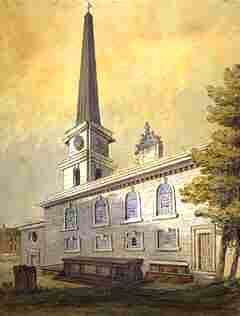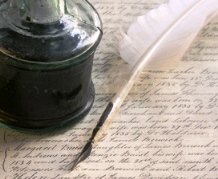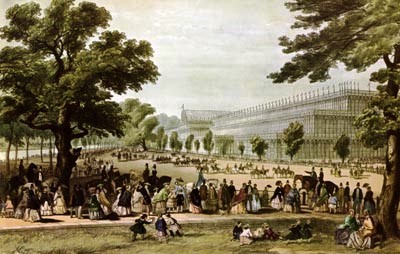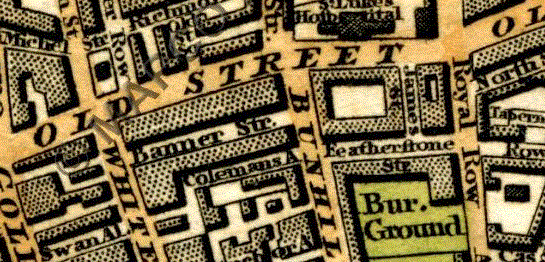peter mallandain + elizabeth hodges
Peter was born on 11 October 1798 at 29 Dunk Street in Mile End New Town and baptised at St Dunstan, Stepney on 28 October. He was the youngest of six children born to James Mallandain and Margaret Layton. Peter married Elizabeth Hodges on 17 June 1821 at St George Hanover Square in Mayfair in central London.
Elizabeth Hodges was born on 28 May 1798 in Eynsford, Kent. She was the daughter of Edward Hodges and Ann Rhodes.
Peter was employed as an Inkstand Maker and for many years operated a shop at 5 James Street in the parish of St Luke. He also appears in numerous Trade and Post Office Directories between 1831 and 1848 as an Inkstand or Ebony Inkstand Maker.
Peter and Elizabeth had nine children between 1822 and 1840 but only six survived infancy. Their first son, Frederick, was born on 20 August 1822 and although his mother was a Baptist, he was baptisted in the established church of St Luke’s Old Street on 20 October. In 1823, Peter and Elizabeth lived at 12 Banner Street off Bunhill Row in St Luke’s and Peter insured the contents of their brick and timber home, including ‘wearing apparel, printed books, plate, glass, stock and utensils’, for £100 with the Sun Insurance Office.

Elizabeth was born on 18 May 1824 and baptised at St Luke’s on 22 August but sadly, she died three months later and was buried at the nearby Bunhill Fields Cemetery on 18 November. By 1825, the family had moved across Bunhill Row to James Street which ran between Featherstone Street and the busy commercial Old Street. Peter most likely ran his business from the shop on the ground floor while the family lived in the rooms above. Their family continued to grow with the births of daughters Emma on 3 October 1825 and Hannah Hastie on 30 September 1828.
Peter appears in the Sun Insurance Office register again in 1829 when he insured the house on James Street and its contents for £600. He took out another policy in 1834 and again in 1836 when he insured the house, contents and a brick and timber shed in the yard for £1000.
Their son, Charles, was born on 24 May 1831 and baptised at St Luke on 21 August 1831. A second daugther named Elizabeth was born on 20 February 1833 and baptised on 17 March at St Luke but like the first, she also died in infancy and was buried at Bunhill Fields on 28 May 1834. When her daughter died, Elizabeth was pregnant with her seventh child, Alfred, who was born on 9 January 1835 and baptised on 1 February at St Luke. Their fourth and final son, Peter, was born at James Street on 8 November 1836 and baptised at St Luke on 4 December. Their youngest child, Elizabeth Ann, was born on 17 February 1840 in Finsbury and baptised at St Luke two months later. One month before Elizabeth’s birth, their young son Alfred died aged only five years and was buried at Bunhill Fields on 25 January 1840.
The family was still living on James Street when the census was taken in June 1841 and seven years later, Peter died of thyroid cancer and was buried at Bunhill Fields on 21 September 1848. They leased the house on James Street for over 20 years and in his will, Peter bequeathed all his ‘Real and Personal Estate including the lease of the house No 5 James Street Old Street in the county of Middlesex in which I now reside’ to his wife Elizabeth. She acted as one of the executors along with her brother Ebenezer Hodges and brother-in-law Benjamin Hastie. Peter also left legacies of £100 to each of his children and the remainder of his personal estate to his wife Elizabeth.

According to the 1851 Census, Elizabeth and five of her children remained on James Street and she carried on the business with the help of her sons Frederick and Charles. A listing in the 1851 Post Office Directory shows they were operating under the company name of Peter Mallandain & Co, Black Wood and Fancy Inkstand & Ink Glass Makers. Her daughter, Emma, was employed as a Berlin worker (a type of embroidery) and son Peter was working as a Compositor or typesetter but her 23 year old daughter Hannah was no longer living at home and has not been found in other census records.
Mallandain & Co was one of 14 000 exhibitors at The Great Exhibition of 1851 where they displayed three table inkstands in the North Gallery: one with stoppered ink glasses, one with jointed ink glasses and one made from English sycamore, stained black and polished. It is not known whether the inkstands were made by Peter before his death or later by his son Frederick.
The Great Exhibition of the Works of Industry of all Nations was held in the Crystal Palace building in Hyde Park, London from May to October 1851. A competition was held to select the best design for the exhibition hall and after some controversy, the committee selected one submitted by Joseph Paxton which was based on his design of a massive greenhouse commissioned by the Duke of Devonshire — but initial public opinion on the design was not favourable. Descriptions of the design included a ‘glass monster’, ‘a big glass soap bubble’ and ‘a conservatory’. The main building was 1848 feet long, 408 feet wide and covered almost 19 acres; it was filled with exhibits from all over the world and goods ranging from silks to clocks and furniture to farm machinery.
Charlotte Bronte made two trips to the Great Exhibition and was impressed by the number and variety of exhibits on display:
‘It seems as if only magic could have gathered this mass of wealth from all the ends of the earth — as if none but supernatural hands could have arranged it thus, with such a blaze and contrast of colours and marvellous power of effect.’

Over six million people visited the Great Exhibition including many from the working classes who took advantage of the low entry fee of one shilling. Visiting the exhibition was so popular it was even incorporated into contemporary folk songs:
Come to the Exhibition
Sweet Catherine with me,
And for a bob a piece my love,
Such funny things we'll see.
The exhibit hall in Hyde Park was never intended to be a permanent structure and following the exhibition, it was moved to Syndenham in South London. The reconstructed palace was opened by Queen Victoria and Prince Albert on 10 June 1854 and remained a popular tourist attraction for over 80 years. The building burned down on 30 November 1936 but the site remains as a popular venue for concerts, sporting events and recreational activities.
By 1861, their son Frederick had taken over the family business and was living at the house on James Street with his wife and three young sons. Charles left home to join the army in 1858 while Hannah and Peter both moved out of the family home when they married but there is no record of Elizabeth or her daughters Emma and Elizabeth Ann in the 1861 census.
Seven years later, Elizabeth Hodges died on 11 June 1868 in Islington and was buried in the family plot at Bunhill Fields Burial Ground.
